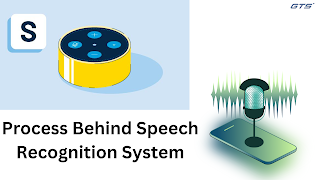Process Behind Speech Recognition System
Did you realize there are speech recognition and vocal recognition that comprise two distinct technologies? Most people make the mistake of confusing one technology for another. Both technologies have a technological background and were developed to enhance convenience and increase efficiency. However, they are distinct.
Both technologies come with their own working process and have different applications. In this blog, we'll discover more about voice and speech recognition. We will also learn what differentiates them. So let us begin!
The six Obstacles to Workflows for Data Annotation
The process of data annotation is a process that is characterized by many moving parts and , consequently, a lot of places of failing. The most commonly encountered obstacles in a workflow for data annotation are like this:
- Interoperability of tools when using different third-party and in-house tools could cause issues with tools communicating with each other.
- The fragmentation in reporting is often an outcome of interoperability issues. When systems don't communicate with each other , it's difficult to see what's going on at a macro level.
- Edge case These are anomalies in the data are in the gray zone of annotation guidelines
- Skills for the workforce and scale for top quality AI Training Datasets, annotators need skills, domain knowledge and the capacity to become more adept as the project advances. Scaling is also a huge challenge in that moving from 10-15 annotators to 2000 is a requirement for an essassy framework.
- Controlling data security The supporting technology infrastructure must be able to support encryption, isolation and regulatory compliance.
- Access to real-time insight but without real-time access, entire batch of data with undiscovered issues might need to be completely redone
What is Speech Recognition Mean?
The process of speech recognition method that allows software programs to detect human speech, interpret it, and transform it to text. The process of speech recognition is carried out through machines learning as well as Natural Language Processing (NLP). The majority of speech recognition software are evaluated by two factors:
- Performance:It is examined by looking at the length of time which the program can keep pace with a human.
- Precision:It is determined by measuring the amount of errors when the conversion of the spoken word into data.
- The ability to recognize speech is popular software application that is used in hospitals, businesses as well as a variety of other businesses.
What is the process behind Speech Recognition Work?
Speech recognition is an ever-changing technology that has advanced significantly over time. It's far superior to its first versions and displays excellent accuracy.
Speech recognition technology is based on the idea of "feature analysis. This method the input of voice is processed with an algorithm known as the phonetic unit recognition technique that identifies the similarities between actual voice input and the expected inputs.
This helps to get more precise results. But, attaining 100% accurate speech recognition accuracy is close to impossible due to the differences in accents and accents, as well as inflections, of speech patterns of different people.
We now need to understand the process of speech recognition:
- The microphone records and converts the vibratos of the voice into electrical signals.
- The signal is then transformed to a digital format using the computer system.
- The digital signal goes to a processing unit which improves the quality of the speech signal and reduces the noise.
- Then, an acoustic model examines the signal input and registers phonemes as well as other components of speech in order to discern the words from one another.
- These phonemes can then be transformed into sentences and words that are comprehensible by leveraging the language model.
What can these Voice-Enabled Systems be Are they used to do?
Both speech and voice recognition systems come with their own capabilities and uses that distinguish them. Here are a few of their functions:
1. Speech Recognition
- It is used most commonly for transcribing the voice of the user into notes. It will be your assistant for speaking that takes the input of what you speak.
- It can help people who have disabilities, since they are able to make use of media more effectively through the use of it.
- Speech recognition can also be utilized to create metadata for Speech Transcription and save information from video files.
2. Voice Recognition
- It is typically utilized to provide voice inputs to a computer , so that the job can be accomplished more quickly.
- It is a great benefit for the user as it provides more efficient and quicker communication that can be used to complete the requirements of the user.
- Voice recognition systems can also be employed to confirm users' identities on the specific software or server.

Comments
Post a Comment